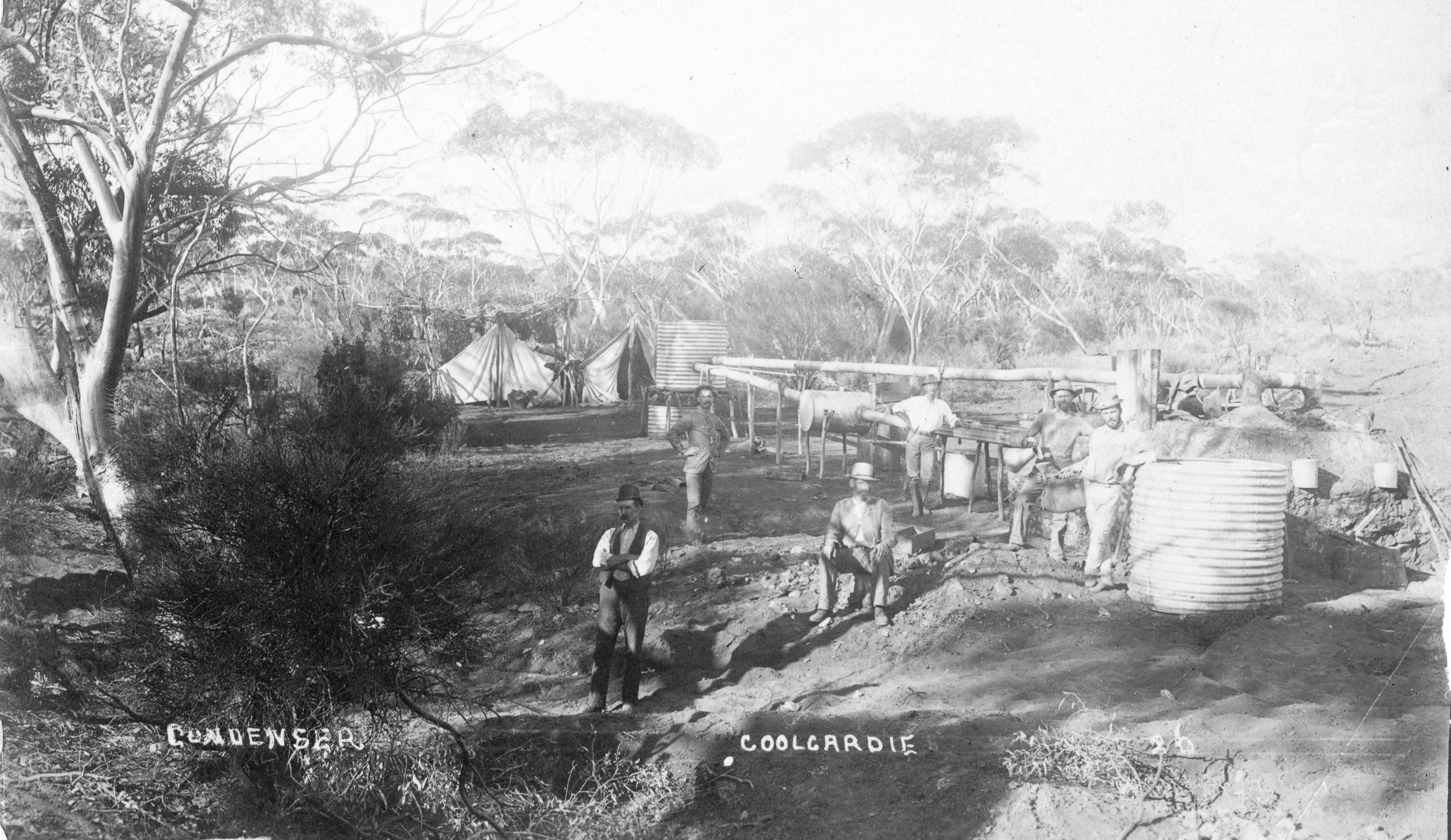Golden Pipeline


A time capsule of water,
gold & Western Australia
A project from the National Trust of WA

A self-guided drive trail between the Perth Hills and Western Australia’s Eastern Goldfields. Go with the Flow. Follow the water to discover more about the audacious goldfields water supply scheme and Engineer CY O’Connor.
“Future generations, I am quite certain will think of us and bless us for our far seeing patriotism, and it will be said of us, as Isaiah said of old, ‘They made a way in the wilderness, and rivers in the desert”
Condensers
More than 100 years before Perth got its first desalination plant, people in the goldfields were drinking desalinated water, albeit not from the ocean.
Because of the decrease in rainfall, today Mundaring Weir, the storage reservoir for the goldfields has to be augmented by desalinated water from the ocean.
While fresh water was almost impossible to find on the Eastern Goldfields, salt water was readily available from salt lakes and bores. Enterprising men soon set up ‘condensers’ to convert salt water to fresh. Some of the condensers were small and portable, operated by one man. Others were larger concerns.

As the number of men on the goldfields increased, the government established huge condensers such as the one at Coolgardie capable of producing 455 000 litres of fresh water per day. In doing so it consumed 545 000 litres of salt water and 100 tonnes of wood.
Water (condensed) sells at 3d a gallon and has a very insipid taste, resembling boiled water with a dash of galvanised iron and several other unrecognisable substances including smoke. John Aspinall 1895
The condensers usually consist of two square 200 gallon iron tanks built with a sort of oven underneath. A pipe 5 or 6 inches in diameter and about 60 feet long leads from each tank, being doubled back with a bend so that the end comes back close to the tank. The steam gets cooled going along the pipe and the water drips from the pipe into a galvanised iron tank. … Such a condenser as I have described will condense 400 gallon a day — Firewood is bought at 15/- a load and the salt is cleaned out once a week. John Aspinall 1895
Many of the mines had been floated into companies and were working fully manned, and any that had a shaft sunk to water level were almost paying working expenses by selling salt water; in fact many were water mines instead of gold mines. Albert Gaston 1894
We have had no rain yet and the dryness of things is immense ‑ there is quite a water famine out at Kintore and the water goes away red hot from the stills as fast as we can possibly supply it. I am anxiously waiting the arrival of material to enable me to increase my plant but there’s such a block on the line that things are unprocurable. Sunday 8th March 1896 William de Mole. The “Lily” [Lily Australis Goldmine] is at last practically abandoned except as a water mine. 18th March 1900 William de Mole
A great number of dryblowers who had got tired of gold digging started condensing water, and in most cases they made more money at that in one week than they would make in a month following gold. … At times square tanks and galvanised iron were unobtainable, and quite a lot of men were making a good living gathering empty meat tins and melting the solder from them. Albert Gaston 1894
Explore
Click on any map section or place below to discover The Golden Pipeline.
Northam to Cunderdin
Explore section two


